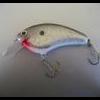I can think of about 6 places in a reel where bearings can be an advantage, if they are good ones (including the anti reverse bearing). Maybe 8 if you include ones on the handle paddles, which I don't much care about. But smoothness depends on a lot of things that have nothing to do with bearings, including the precision alignment and design of all the parts, how well the gears mesh, how well maintained the brakes and other internals are, the overall design of the reel, etc. Choosing between 2 reels, one from a second tier company with 12 B.B.'s and one from a first tier company with 4-8 B.B's, I'll take first tier every time. You may find a jewel from a second tier company occasionally but it's a crapshoot. I buy from Shimano, Daiwa, or Abu and have been satisfied with their quality. Others may suggest Lews but I haven't tried them so can't comment. JMHO.




